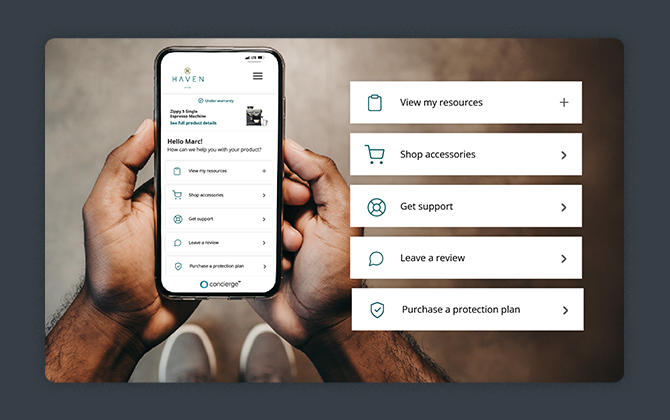The Secret to Brand Growth? Engaging Current Customers.
Today’s product brands are up against a lot. Between rising costs, supply chain challenges, and growing competition from both legacy and DTC brands,...
OUR SOLUTIONS
OUR TECHNOLOGY
2 min read
Registria : Sep 16, 2025 6:00:00 AM

This is especially true for brands that sell through unaffiliated retail stores, marketplaces or third-party sellers. In these cases, the brand often never interacts directly with the customer. While a product may be sold, the relationship ends at check out - unless the brand takes proactive steps to reconnect with the buyer.
But without knowing who your product owners are or what they’ve purchased, there’s no way to offer personalized service, anticipate needs or build brand loyalty. That’s why identifying your customers and the products they own is the first and most important step in any customer engagement strategy.

Many brands focus on getting the sale, either direct or through a third-party retailer. But real engagement starts after the purchase. That’s when customers start forming deeper opinions about your brand—based on onboarding, product performance, support and communication.
By capturing customer and product data early on, you unlock the ability to:
Since retail channels don’t always share buyer information, it’s crucial to take advantage of early, direct touchpoints. These “moments of truth” are ideal times to collect data:
Start small and scale up. You don’t need every detail to begin building a relationship, but some core information includes:

The more complete your data, the more effectively you can support customers and personalize their experience. And the more customers you identify, the greater your return on customer engagement efforts.
At Registria, we help brands turn disconnected sales into connected relationships. Our OXM platform makes it easy to collect, manage and act on ownership data—no matter where your product is sold.
This is the first of four framework blogs part of our Customer Engagement Blog Series, which will be followed by strategies to improve customer engagement for product brands. We will explore three more framework pillars to create a logical structure for a deeper understanding of the post-purchase customer relationship with product brands, then we will tackle how to put the pillars into action!

Today’s product brands are up against a lot. Between rising costs, supply chain challenges, and growing competition from both legacy and DTC brands,...

Post-purchase commerce is one of the easiest ways to unlock new revenue without seeking new customers. In fact, it can be the beginning of a new kind...

By Cassie Ulvick, Senior UX/UI Designer at Registria